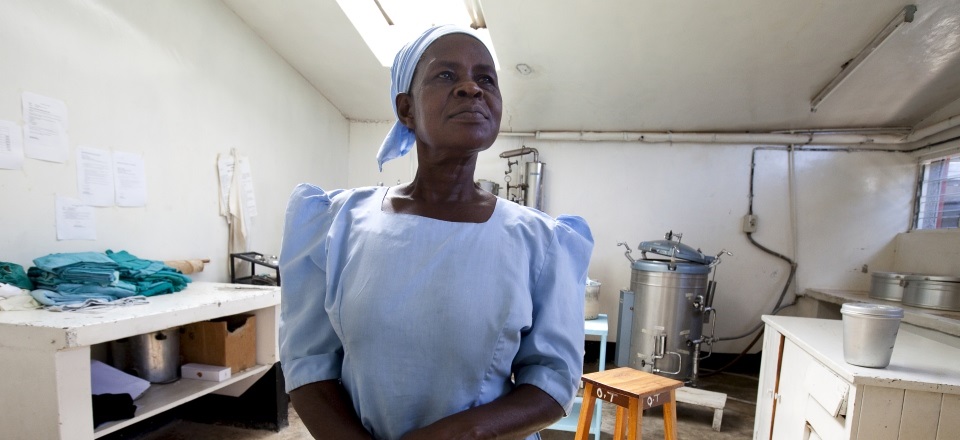Ensuring health workforce takes its place at center of global health architecture

By Richard Seifman, Consultant, IntraHealth International
 Courtesy IntraHealth International
Courtesy IntraHealth International
NOTE: This piece was originally posted on the IntraHealth Global Health Blog.
Every so often, a prevailing system or approach changes dramatically. Small changes and tweaks to the status quo give way to a seismic paradigm shift. Now may be just such a moment in global health, and now is the time to ensure that the health workforce takes its place as a central and integrated part of the evolving global health development architecture.
In 2011, The Lancet–University of Oslo Commission on Global Governance for Health, in collaboration with the Harvard Global Health Institute, was created to promote new thinking about the global health architecture and about ways to move beyond conventional wisdom. The commission focuses on the ways in which social inequalities distort the distribution of health. Its report, to be published in The Lancet in fall 2013, addresses this question: "Under what conditions do shared interests, objectives, and standards among global actors to protect communities and human livelihood prevail, and when do they fall apart?”
The deliberations of another group, co-led by Professor Lawrence Gostin, who heads the O’Neill Institute for National and Global Health, will be publishing on the same subject in the American Journal of Public Health, also in the fall of 2013.
The impetus to revisit the global health architecture in the 21st Century is driven by various factors.
First, there has been a dramatic increase in the number of global health players from across the world’s social and economic spectrum. Academic global health departments at universities, once rare, have exploded, and a growing and diverse group of non-State actors in both richer and poorer countries are participating in health service delivery and the conversation around public health.
Second, the international community expects a fast and agile response to today’s and future global health challenges. Take the powerful international health regulations that were established in 2007—countries are now required to report certain disease outbreaks and public health events to the World Health Organization (WHO) in a timely manner.
Finally, the volume of health knowledge and innovation has risen dramatically thanks in part to the replacement of a goods-producing economy with the “knowledge economy,” as well as the increased globalization of goods and services, and the revolution of information and communication technology.
It is also apparent that future health challenges will be fundamentally different—with different diseases and health demands—from those we know today. In many respects, this was the motivation for another key 2010 report: “Health Professionals for a New Century: Transforming Education to Strengthen Health Systems in an Interdependent World,” which recognized that the Flexner I Report of 100 years ago could no longer serve as the basis for educating effective health professionals in the 21st century.
So what is the point?
The point is that the human resources for health (HRH) community is now rightly focused on two important global conferences: the Third Global Forum on HRH in November 2013 (Recife, Brazil) and the Prince Mahidol Award Conference on “Transformative Learning for Health Equity” in January 2014 (Bangkok, Thailand).
However, leading up to these events, high-level, intensive discussions about the global health architecture will be generated by the forthcoming publications and recommendations of the Oslo Commission and the American Journal of Public Health symposium. The recommendations and discussions could spell out a new approach to health development, and the HRH community knows that health workforce strengthening must be central to that approach.
The recommendations and proposals that emerge from these international global health system studies should be of great interest to the HRH community. Ways to ensure access to qualified, supported health workers must be part of the discussion of better coordination among financing institutions with global reach, such as the Global Fund to Fight AIDS, TB ,and Malaria; the GAVI Alliance; the Bill & Melinda Gates Foundation; and the major multilateral and bilateral donors and financing institutions. WHO regional health offices could provide leadership in tailoring HRH needs to issues of social justice in their specific regions. These are just two potential examples, but we must be prepared to have these conversations.
Whatever the findings and recommendations may be, the HRH community must take them into account during the upcoming conferences and use them to contribute to the global health system dialogue. If they have not done so already, the Third Global Forum conference organizers could try to contact the respective global health system study leaders to get early indications of how they are positioning HRH issues.
In any case, the upcoming reports and the timing of these global HRH events are opportunities to promote the critical role of the health workforce in the global health system as we move forward.
